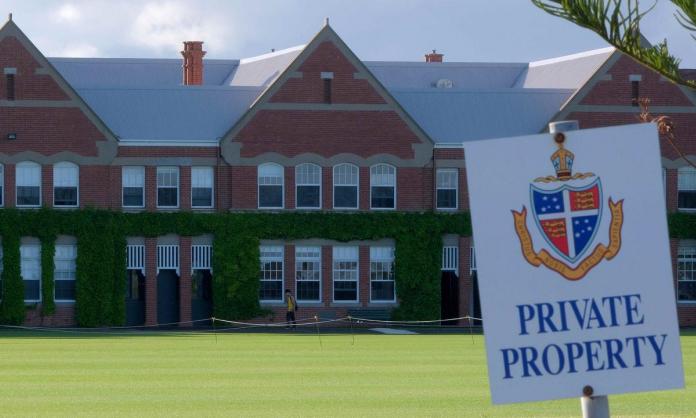Under the cover of the pandemic, the Australian government has lavished elite private schools with public money. New figures recently provided to parliament by the Australian Tax Office reveal that 700 private schools, including some of Australia’s wealthiest, raked in $750 million—on top of the already hefty funding that state and federal governments provide.
Financial statements lodged with the Australian Charities and Not-for-Profits Commission paint a sobering picture of the governmental largesse. Wesley College, an elite Melbourne school that charges up to $35,000 in tuition fees annually, received $18.2 million from JobKeeper, recording a budget surplus of $2.2 million. Geelong Grammar ate up $8.3 million while posting a profit of $7.2 million. The subsidy boosted the already excessive government funding: $19 million and $8.7 million, respectively, for Wesley and Grammar.
The story is the same across the country. For example, one of Sydney’s most expensive private schools, Moriah College, amassed $7 million in JobKeeper payments on top of its $9.4 million in government funding. The school’s net profit last year totalled $9.7 million.
Some private schools have tried to justify these obscene handouts by citing a drop in boarding student enrolments and therefore revenues because of border closures. But you don’t need an accounting degree to notice the flagrant discrepancy between JobKeeper payments and minor revenue losses from boarding students. Take Ballarat Grammar. Its $5.9 million JobKeeper subsidy compensated more than comfortably for the $1 million loss in boarding income.
So why did elite private schools gorge themselves on the JobKeeper scheme in this way? The obvious answer is because they could. Private schools simply availed themselves of a Liberal government scheme that was always ripe for rorting by businesses big and small.
In its first phase, bosses could claim JobKeeper if they had a predicted revenue decline of 30 percent (15 percent for charities) compared to the year before. Whether reality matched their projections wasn’t necessarily relevant. The Liberal government didn’t check and still doesn’t want to. The party saves its fiscal scrutiny and punishment for workers and the unemployed, as the “Robodebt” scheme demonstrated.
It’s not just the Liberals who help out the wealthy private schools. Under the watch of both Liberal and Labor, federal funding for private schools has increased at least six times more than for public schools over the last decade, according to the Australian Curriculum, Assessment and Reporting Authority. And neither major party has any interest in overhauling the system—not least of all because their own ranks are filled with “old boys” whose private school education set them up for cushy political careers.
To this already entrenched inequity in the school system, the COVID-19 crisis has added a particularly grotesque colouring. Elite private schools not only pocketed JobKeeper payments to fund capital investments, but also offered parents fee reductions. Wesley College, for instance, offered parents a 20 percent reduction in term two tuition fees and gave additions discounts of up to $2,000.
Wesley College principal Nicholas Evans told the Guardian that “several hundred Wesley families expressed financial hardship” due to the pandemic and required assistance. How nice that Wesley could oblige them. This was not the case for the thousands of working-class parents who lost work or work hours due to COVID-19, with children in public schools that run on shoestring budgets.
Then there’s the case of the elite St Joseph’s College in Sydney administering Pfizer jabs to year 12 students, even though most of them were not yet eligible.
Our class-divided society continues to reproduce gross inequality in education and health. The fact that private schools have not only shielded themselves from the pandemic, but in many cases financially benefited from it, is a case in point.








